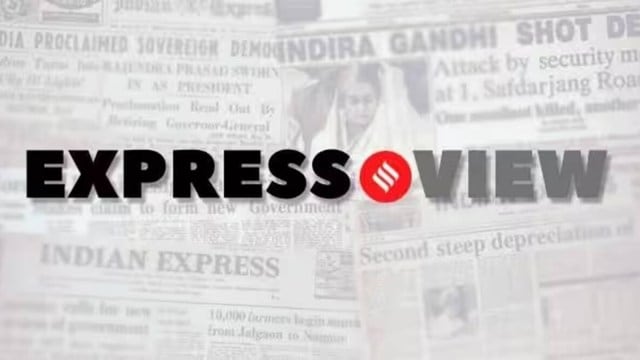
In the last lap of his high-octane campaign in Coimbatore, where he is the BJP candidate, K Annamalai told this newspaper that the party will win seats “in double digits”, coming in second “in all the remaining seats” in Tamil Nadu this time. As all 39 seats in Tamil Nadu go to polls on Friday, the confidence the party’s state president exudes frames the salience that Tamil Nadu has in the BJP’s electoral calculus. The southern states — Tamil Nadu, in particular — are key to achieving the party’s goal of “400 paar”. The BJP believes that the formidable wall of Dravidian politics will be breached this year, with the electoral contest in Tamil Nadu becoming a three-cornered one.
In a state that has kept national parties at bay for five decades, this is easier said than done. The first challenge for the BJP has been to rid voters of the impression that it is just another party trying to control the state from far-away Delhi. Ever since the C N Annadurai government rode to power in Madras state in 1967 and inaugurated the Dravidian era in Tamil politics, power has alternated between the DMK and AIADMK. With that landmark victory, the belief that national parties can only damage Tamil interests took deep root. Through its embrace of state-specific issues during its 2024 campaign — including the dispute over the island of Katchatheevu, over which it targeted both Congress and the DMK — the BJP has sought to correct this impression. Its eagerness to shed its image as a “centralising” party is also evident in the free hand that it has given its state president. For example, when Annamalai’s persistent attacks on the AIADMK came in the way, from the BJP’s perspective, of a much-needed alliance last year, the response from Delhi was muted. The BJP’s other great challenge in the state is overcoming what is seen as an unbridgeable gap between a party of Hindi-speakers and an ancient, proud culture. To that end, the BJP has enthusiastically sought to champion the Tamil language and culture at every level — from playing up the centuries-old connection between the north and south via the Kashi Tamil Sangamam, started in 2022, to giving the Sengol, an ancient Chola symbol of power, pride of place in the inauguration of the new parliament building. The Prime Minister himself has frequently invoked the state’s contributions, including tracing the lineage of Indian democracy back to an over 1,000-year-old inscription in Tamil Nadu’s Uthiramerur.
At the booth, where most voters have been loyal to the symbols that have long dominated the state’s political landscape — the DMK’s rising sun and the AIADMK’s two leaves — the BJP’s lotus has been a rare sight. The BJP may see an opening for a third party in Tamil Nadu. How voters respond to this call will shape the party’s future in navigating the formidable challenge of creating an alternative to Dravidian politics.

